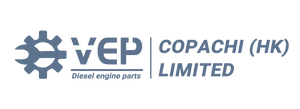With the further development of the international economy, the ownership of the vehicle volume is relatively high, and various problems will always be encountered in the use of the vehicle volume. Let's take a look at the Bosch commercial vehicle CRIN2 injectors according to the structure can be divided into 3 types (Figure 1), this article takes the standard (3 types) as an example.
CRIN2 standard type 3 6-hole injector, which is composed of the injector body, hole injector assembly, hydraulic service system, and solenoid valve assembly (Figure 2). There is a set of ten-digit code on the injector, which is the order number of Bosch, which is used when purchasing accessories.
(1) Injector body
The injector body is the basic part of the injector. The lower end is equipped with a hole-type injector assembly, the hydraulic servo system, and the solenoid valve assembly are installed in the cavity on the upper part of the injector body, and the upper half has the oil inlet. There is a sealed O-ring on the outer cylindrical surface of the hole and the oil return hole, and there are oil inlet and oil return channels inside (Figure 3).
(2) Hole injector assembly
The hole-type fuel injection nozzle assembly is composed of a needle valve, a needle valve body, a needle valve spring, a spring seat, and a fuel injection nozzle thread sleeve, etc. (Figure 4). The working surface of the needle valve is carburized. The needle valve is similar to the injector needle valve of a traditional diesel engine, with a pressure bearing cone and a sealing cone. The upper-end surface of the needle valve body has an oil inlet hole and 2 positioning pinholes, which are positioned by the positioning pin. After installation, ensure that the oil inlet hole on the needle valve body is aligned with the oil inlet hole on the injector body. Down, the needle valve is closed. The threaded sleeve of the fuel injector fixes the needle valve, needle valve body, needle valve spring and spring seat on the lower end of the fuel injector body.
(3) Solenoid valve assembly
The solenoid valve assembly is composed of solenoid valve, solenoid valve spring, armature shaft, armature shaft disc, and return spring, etc. (Figure 5). There are two electrical terminals on the upper end of the solenoid valve assembly (no need to distinguish positions when wiring), and an insulator is located between the two terminals. The solenoid valve spring, armature shaft, armature disc, and return spring are installed in the inner cavity of the solenoid valve. The solenoid valve is controlled by the engine electronic control unit through the duty cycle PWM signal and is driven by a higher voltage (close to 100V) to achieve a large driving current (to achieve rapid lifting of the armature shaft). When the power supply voltage (24V) is used for driving, it is to achieve the maintenance current (based on energy-saving considerations).
The engine control unit controls the injector's solenoid valve to control the injection timing, injection volume, and injection pattern (pre-injection + main injection).
(4) Hydraulic service system
The hydraulic service system is composed of a ball valve, a ball valve seat, a control piston, and a push rod.
The ball valve is installed on the upper end of the control piston return orifice, and its upper end is in contact with the ball valve seat, and the ball valve seat is in contact with the armature shaft of the solenoid valve assembly. Under the downward elastic force of the solenoid valve spring, the armature shaft and the ball valve seat, The ball valve seat, and the ball valve can be reliably contacted to keep the oil return orifice closed. The control piston has an oil inlet orifice and an oil return orifice, and the oil inlet orifice communicates with the oil inlet of the injector (Figure 7). The upper end of the push rod is installed in the internal cavity of the control piston, and the lower end is in contact with the needle valve.
(5) The working process of the injector
When the solenoid valve of the injector is not energized, the armature shaft presses the ball valve seat and the ball valve on the oil return orifice of the control piston under the action of the spring, so that the oil return orifice is closed and acts on the hydraulic servo system. The pressure at the top of the middle push rod is greater than the pressure acting on the pressure bearing surface of the needle valve, coupled with the downward elastic force of the needle valve spring, the needle valve is forced into the valve seat, isolating the high-pressure oil passage from the combustion chamber, and the injector No fuel injection.
When the solenoid valve of the injector is energized, the armature shaft overcomes the elastic force of the spring to slightly raise the ball valve seat and the ball valve, so that the oil return orifice opens, and the pressure in the needle valve control chamber decreases, which acts on the hydraulic servo system to push The pressure on the top of the rod also drops. Once the pressure is lower than the pressure acting on the pressure surface of the needle valve of the injector, the needle valve rises and fuel is injected into the combustion chamber through the nozzle hole. In addition, the fuel leaking inside the injector is connected to the return pipe of the high-pressure fuel pump through the return pipe of the injector and the return pipe of the common rail together and then flows back to the fuel tank together through a general return pipe (Figure 8).
Judging from the usage, oil circuit failures are the most common, mainly caused by oil quality problems and improper use and maintenance. A correct understanding of the oil circuit composition of the Bosch common rail system, the structure and working principle of the main components, is of great help in troubleshooting the oil circuit.




